#architect Krasnov
Explore tagged Tumblr posts
Text
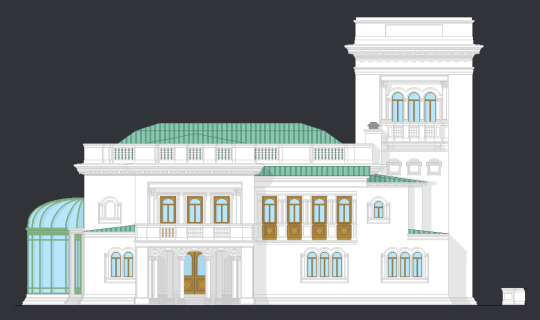
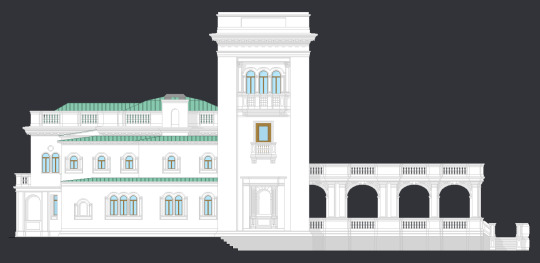
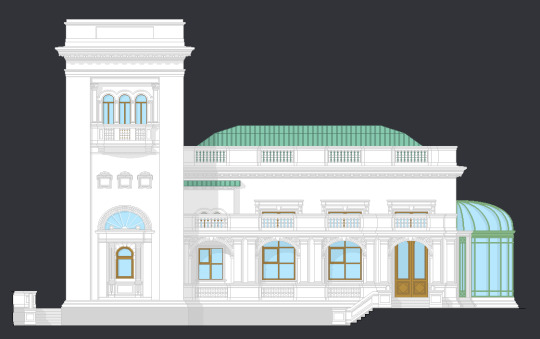

A house design heavily inspired by the "White Palace" or "Livadia" which was built for the last Russian Imperial Family in the Crimea of the Ukraine between 1909-1911, designed by the architect Nikolai Krasnov. I had a lot of fun with this. xD PLEASE note that I take a lot of time to render/and or draw my work. So please do not post this elsewhere unless you've my permission to do so. Thank-you so much!
#pixel art#architectural#elevation#house design#windows paint#conceptual art#architectural design#italian renaissance#italianate#villa design#turn of the century#1910s#1911#livadia
3 notes
·
View notes
Video
youtube
Алупка, Церковь Святого Пантелеимона в санатории Боброва. Крым. Alupka, ...
#Alupka#Church of St. Panteleimon#sanatorium Bobrova#Crimea#temple in Alupka#Alupka temple#sanatoriums of Crimea#children's sanatoria of Crimea#Russian church#churches of Crimea#architect Krasnov#церковь Краснова#церковь 19 века#старинная церковь#церковь Пантелеимона#храм#храм Пантелеимона#церковь пантелеймона#Храм в Алупке#церковь в Алупке#санаторий Боборова#Извергин#Алупка#Алупка санаторий#Алупка храм#южный берег Крыма#крымские санатории#туберкулёзный санаторий#лечение опорно двигательного#лечение в Крыму
0 notes
Text


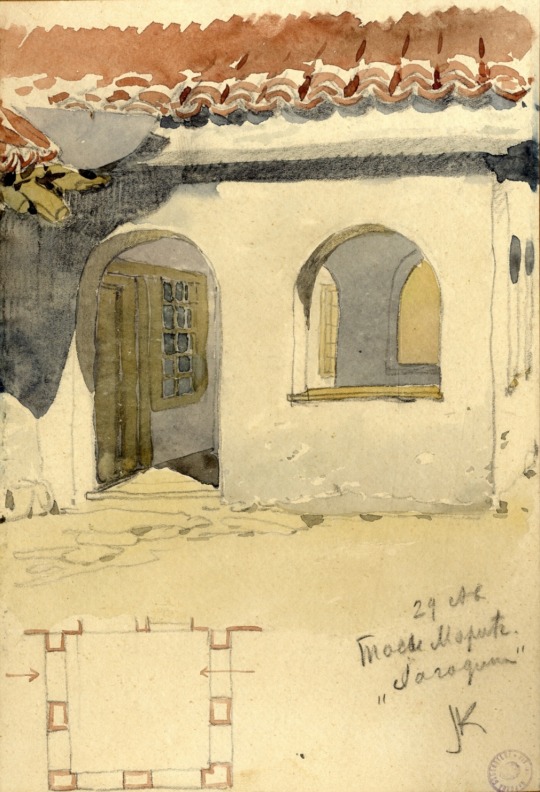




Serbian traditional houses, Illustrated by Nikolai Petrovich Krasnov. Digital National Library of Serbia
He came to Belgrade in 1922 and got a job in the Architectural Department of the Ministry of Construction, where he worked as a contract engineer, construction inspector and head of the Department for Monumental Buildings and Monuments.
Displaying his high creative skill and using it to build the capital of his new homeland, which wholeheartedly accepted him, and soon became a respected state and court architects. In the period from 1923 to 1939, he worked on the design, construction, completion, adaptation and decoration of the most important state buildings, numerous profane buildings, churches and memorials.
He marked an entire period of Serbian architecture with his original treatment of heraldic decoration on the facades of his buildings.
186 notes
·
View notes
Text
Daily Wrap Up August 21, 2022
Under the cut:
Russian authorities said Sunday they had opened a murder investigation after the daughter of influential, ultra-nationalist philosopher Alexander Dugin was killed by a car bomb on the outskirts of Moscow
Ukraine has denied involvement in the death of Darya Dugina amid fears the car bombing raises the stakes in the Russia-Ukraine war
Russian missiles hit Ukraine's Odesa region as war nears half-year mark
According to the General Staff of Ukraine's Armed Forces, the Russian command has closed the sky in certain sections of the Lipetsk, Voronezh, and Belgorod regions from Aug. 22 until Aug. 25
“Russian authorities said Sunday they had opened a murder investigation after the daughter of influential, ultra-nationalist philosopher Alexander Dugin was killed by a car bomb on the outskirts of Moscow.
The Russian Investigative Committee said it believed someone planned and ordered the car explosion that killed Darya Dugina, based on evidence already collected from the blast. “Taking into account the data already obtained, the investigation believes that the crime was pre-planned and was of an ordered nature,” the investigative committee said in a statement Sunday.
Dugina died at the scene after “an explosive device, presumably installed in the Toyota Land Cruiser, went off on a public road and the car caught fire” at around 9.00 p.m. local time on Saturday, near the village of Bolshiye Vyazemy, according to the press service of the Russian Investigative Committee, as reported by the Russian state news agency TASS.
Dugina’s father is a Russian author and ideologue, credited with being the architect or “spiritual guide” to Russia’s invasion of Ukraine. He is purported to have significant influence over Russian President Vladimir Putin and was described as “Putin’s Brain” by Foreign Affairs magazine.
Both Dugin and his daughter have been sanctioned by the United States. The United Kingdom sanctioned Dugina in July for being “a frequent and high-profile contributor of disinformation in relation to Ukraine and the Russian invasion of Ukraine on various online platform,” it wrote.
Videos of the explosion showed a vehicle on fire at the side of the road and smashed car parts strewn across the surrounding area. One unverified video appears to show Dugin at the scene.
A friend of Dugina told TASS that he believed Dugina’s father was the true target of the blast – or possibly both of them – as the car belonged to Alexander.
“It’s her father’s car,” Krasnov told TASS. “Dasha (Darya) drives another car, but she drove his car today, and Alexander went separately,” Andrei Krasnov, head of the Russky Gorizont (Russian Horizon) social movement and a personal acquaintance of Dugina’s family, told TASS.
A Russian foreign ministry official implied that Ukrainian state structures were responsible for the explosion, a claim that Ukrainian authorities have denied.“-via CNN
~
“Ukraine has denied involvement in the death of Darya Dugina amid fears the car bombing raises the stakes in the Russia-Ukraine war.
Volodymyr Zelenskiy’s top adviser, Mykhailo Podolyak, said in a televised statement that Ukraine had no involvement in the death of Dugina, the daughter of Putin confidant Alexander Dugin.
Podolyak told Ukrainian TV: “I confirm that Ukraine, of course, had nothing to do with this because we are not a criminal state, like the Russian Federation, and moreover we are not a terrorist state.”
He appeared to blame internal power struggles between “various political factions” in Russia for the killing, and suggested the incident was the “Karmic” payback for supporters of Russia’s actions in Ukraine like Dugina and her father.”-via The Guardian
~
“Artillery shells rained down on a city close to Europe's biggest nuclear plant overnight and Russian missiles hit targets near Odesa, a Ukrainian Black Sea port and grain export hub, as the war headed for its six-month milestone on Wednesday.
Aug. 24 will also mark 31 years of Ukraine's independence from Soviet rule and President Volodymyr Zelenskiy in a nightly video address called for vigilance, saying Moscow could try "something particularly ugly."
Russian authorities said on Sunday they were investigating a suspected car bomb attack outside Moscow that killed the daughter of Alexander Dugin, an ultra-nationalist Russian ideologue who advocates Russia absorbing Ukraine. read more
While the investigators said they were considering "all versions" when it came to establishing who was responsible, the Russian Foreign Ministry speculated there could be a link to Ukraine, something a Zelenskiy adviser dismissed.”-via Reuters
~
“An exhibition of destroyed Russian military vehicles adorns the streets of Kyiv ahead of Ukrainian independence day on Wednesday. Ukrainians are saying that Vladimir Putin got his wish for a parade in their capital, but just not the one he wanted.
Volodymyr Zelenskiy is obviously worried that Russia is going to try to spoil the celebrations and has warned his countrymen and women that Putin might try something “ugly” or “vicious” ahead of Wednesday.
“We must all be aware that this week Russia could try to do something particularly ugly, something particularly vicious,” Zelenskiy said in his nightly remarks on video on Saturday.
Security has been stepped up in the second city, Kharkiv, with the city’s curfew extended on Wednesday.”-via The Guardian
~
“Russia partially closes sky over 3 regions near Ukraine.
According to the General Staff of Ukraine's Armed Forces, the Russian command has closed the sky in certain sections of the Lipetsk, Voronezh, and Belgorod regions from Aug. 22 until Aug. 25.”-via Kyiv Independent Twitter, here’s a Facebook post from General Staff of the Armed Forces of Ukraine with more information (Ukrainian language)
16 notes
·
View notes
Text

Livadia Palace was the summer retreat of the last Russian Tsar, Nicholas II, and his family in Livadiya, Crimea.Formerly granted to Lambros Katsonis and later a possession of the Potocki family, the Livadia estate became a summer residence of the Russian Imperial family in the 1860s, when architect Ippolito Antonovich
Monighetti built a large palace (the Grand Palace),a small palace (Maliy Palace) and a church there. The residence was frequented by Tsar Alexander II of Russia, while his successor Tsar Alexander III used to live (and died) at the Maliy Palace.His son Tsar Nicholas II decided to have the Grand Palace demolished and replaced with a larger structure. (The smaller palace was preserved, as the place of his father's death, but was later destroyed during World War II.)
Around 1909, Nikolay Petrovich Krasnov, Yalta's most fashionable architect, responsible for the grand ducal residences in Koreiz, was engaged to prepare plans for a new imperial palace. The Tsar's diary indicates that the design was much discussed in the Imperial Family; it was decided that all four façades of the palace should look different. After 17 months of construction, the new palace was inaugurated on 11 September 1911.
Livadia Palace was the place Tsar Nicholas ll chose to retire to after his abdication and the forming of the new government of Russia.
2 notes
·
View notes
Photo

Iron gate in Livadia, gifted to Nicholas II by the Youssoupoff’s.
"On the 5th of October I decided to go to lunch and to breakfast in Livadia, where I celebrated the birthday of the prince (Felix Sr?). In general, Livadia is very beautiful, and directly surprised at the rapid execution of such a huge and complex work! The Emperor is delighted and says that he blesses Krasnov's name. The latter, of course, was also at the celebration, and more than ever stuttered! He received the title of courtier architect, portraits of the Emperor, the Empress and all the children with a touching inscription, and in full ecstasy! There are, of course, many errors and details that can not be overlooked, quand on a le gout (Having a subtle taste}, but all this is fixable and, perhaps, will be fixed someday. The courtyard is very beautiful, and our gate is wonderful how good! The Emperor talked with me for a long time and asked me About you. She (Empress Alexandra Feodorovna) for a long time stood, talked with everyone and, of course, since almost all the time lies!" Letter from Princess Zenaida Youssoupoff to her son, Prince Felix Youssoupoff dated October 14, 1911.
#Princess Zenaida Yusupova#Princess Zenaida Youssoupoff#Prince Felix Youssoupoff#Youssoupoff#Youssoupov#Yusupov#Yussupov
140 notes
·
View notes
Text
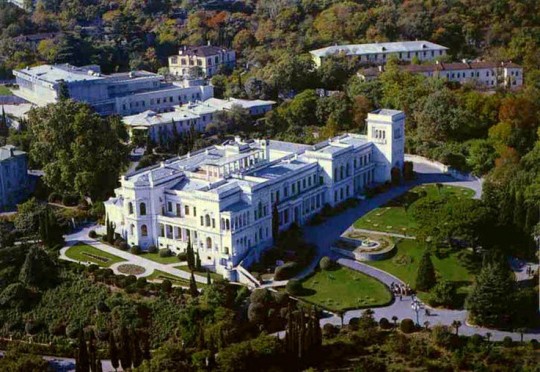
Livadia Palace Ливадийский дворец was a summer retreat of Tsar Nicholas II of Russia and his family in Livadiya, Crimea in Livadiya,the Crimea of Imperial Russia.
Formerly granted to Lambros Katsonis and later a possession of the Potocki family, the Livadia estate became a summer residence of the Russian Imperial family in the 1860s, when architect Ippolito Monighetti built a large palace (Grand Palace), a small palace (Maly Palace), and a church there. The residence was frequented by Tsar Alexander II of Russia, while his successor Tsar Alexander III of Russia used to live (and died) in the smaller palace. His son Tsar Nicholas II of Russia decided to have the larger palace demolished and replaced with a larger structure. (The smaller palace was preserved, as the place of his father's death, but was later destroyed during WWII.)
Around 1909, Nikolai Krasnov, Yalta's most fashionable architect, responsible for the grand ducal residences in Koreiz, was engaged to prepare plans for a new Omperial palace. The Tsar's diary indicates that the design was much discussed in the Imperial Family; it was decided that all four façades of the palace should look different. After 17 months of construction, the new palace was inaugurated on 11 September 1911.
0 notes